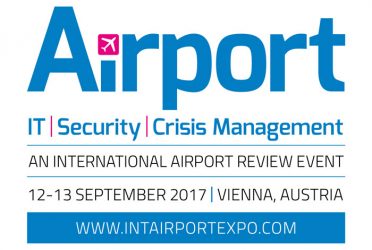Taking charge during a terrorist attack: Implementing awareness
- Like
- Digg
- Del
- Tumblr
- VKontakte
- Buffer
- Love This
- Odnoklassniki
- Meneame
- Blogger
- Amazon
- Yahoo Mail
- Gmail
- AOL
- Newsvine
- HackerNews
- Evernote
- MySpace
- Mail.ru
- Viadeo
- Line
- Comments
- Yummly
- SMS
- Viber
- Telegram
- Subscribe
- Skype
- Facebook Messenger
- Kakao
- LiveJournal
- Yammer
- Edgar
- Fintel
- Mix
- Instapaper
- Copy Link
Posted: 23 March 2017 | Bart Brands | No comments yet
In the first of a four-part series, Bart Brands, leading security analyst unpacks the AAEA method to ascertain how best individuals can take charge during a terrorist attack at an airport.


Implementing Awareness. The AAEA-method applied
A.A.E.A stands for Awareness, Avoidance, Evasion and Attack
My first article in which I explained the AAEA-method, containing advice on how to behave during a terrorist attack at an airport, was met with a lot of response. I am thankful to be given the opportunity to further explore the four individual elements of the AAEA-method. Though these elements sometimes change order, depending on the circumstances, it only makes sense to start having a better look at the first element of the AAEA-method, Awareness!
“Awareness is the ability to directly know and perceive, to feel, or to be cognisant of events. More broadly, it is the state or quality of being conscious of something.”[1]
Being aware sounds easy and natural, but can sometimes be the hardest thing to do. Consistently and willingly applying this first element of the AAEA-method can, in our modern 21-century society, amount a willful act of determination. In a society that constantly and in a myriad of ways screams for our undivided attention, being aware of one’s surroundings can feel at times almost unnatural. Ever since the internet revolution, the ability to work, relax and stay connected no matter where you are, has eroded our interest in our immediate surroundings and therefore our situational awareness.
The basics:
The AAEA-method is developed primarily for travellers. Any place that hosts large amounts of visitors on their respective ways, has to make sure those visitors abide by a certain structure in order for things to run smoothly. An airport is a good example of such a place. Every traveller needs to enter the airport, check in luggage, go through ID and security checks before boarding a plane.
That structure is also the main point of weakness. Every potential attacker knows they can expect large gatherings of waiting people on all mentioned points before boarding. Known cases show us that attackers change tactics and quickly adapt to implemented security measures such as checkpoints, body scans and restrictions on liquids and others items.
Thus applying awareness is first and foremost a duty and responsibility of the individual traveller. We must all take ownership of our own safety and people should always calculate risk into travelling through higher risk areas. That does however not imply that policymakers should not act.
Changing awareness:
Changing awareness or the state of public consciousness in a certain venue from a policy position is a real challenge. Thinking about this process the AAEA-method uses Maslow’s four stages of competence. The goal for policymakers should be to have the public move from a state of “unconscious incompetence” to a state “unconscious competence” in a very short amount of time and space.
Stage one:
Following Maslow’s four stages of competence first begins with letting people know they are unaware of the risks involved with travel. Showing people that airplane travel is by far the safest way to travel in the earliest stage possible is both reassuring and puts into context the security measures taken by airports, governments and yes, even implementing my AAEA-method. Welcoming travellers with notifications that the airport they are travelling through serves X amount of travellers with X amount of ‘incidents’ is a constant reminder that any irrational fear should never keep people away from airports. It also automatically helps most people into stages two and three of the four stages of competence.
Stages two and three:
Confronting travellers with facts almost instantly moves travellers out of stage one. Stage two then forces the traveller to think about the feeling of incompetence he or she might feel. Using this “conscious incompetence” and the natural urge most people have to gain some level of control in a situation, makes them very susceptible for suggestions on how to deal with the incompetence they are now conscious of.
Key point here is that any solutions, be they in the form of a checklist or some tips and tricks, should be presented in such a way that it makes travellers feel they can actually make a difference in their own lives and situations, or those of their family, friends or fellow travellers, by consciously paying attention to their surroundings. When implemented the right way, stages two and three of the competence model can be reached before or within minutes after a traveller enters an airport.
Stage four:
Reaching stage four of competence requires time and dedication of the part of policymakers and professionals. Because airports will always host people that have never flown before or are generally less inclined to participate in improving their own safety, promoting awareness is a never ending policy. Policymakers can however quickly reach the point where the people that are aware can make a change in the way real security is impacted. It is also a cheap way to impact security and can be easily integrated in most systems of customer communication.
After awareness:
Because awareness alone is not enough to stop attacks, airports should consider ways in which travellers can instantly report when they perceive a threatening situation. Most airports already have security personnel in place , so training this personnel in assessing threats and interacting with travellers is well advised and should be an easy step.
Aware of the importance of awareness:
The three elements following Awareness in the AAEA-method are Avoidance, Evasion and Attack. All follow and use awareness in their application and therefore the importance of this first element of the AAEA-method can never be overestimated.


Bart Brands is a 35 year old Security expert and owner of ‘82 ADVISE. His company specialises in security (intelligence) and anti-terror training and advice. He has a degree in applied security sciences and is a former member of both the city council of The Hague and Provincial Parliament in South Holland. for more information you can contact Bart at www.bartbrands.com
Is airport and aviation security of interest to you?
Why not check out our comprehensive ‘Security Series’ online here…?
Or why not register your interest to the renowned Airport 2017 event later this year. To find out more, click here…


Related topics
Accidents and incidents, Cyber-security, Security, Terrorist attacks

















